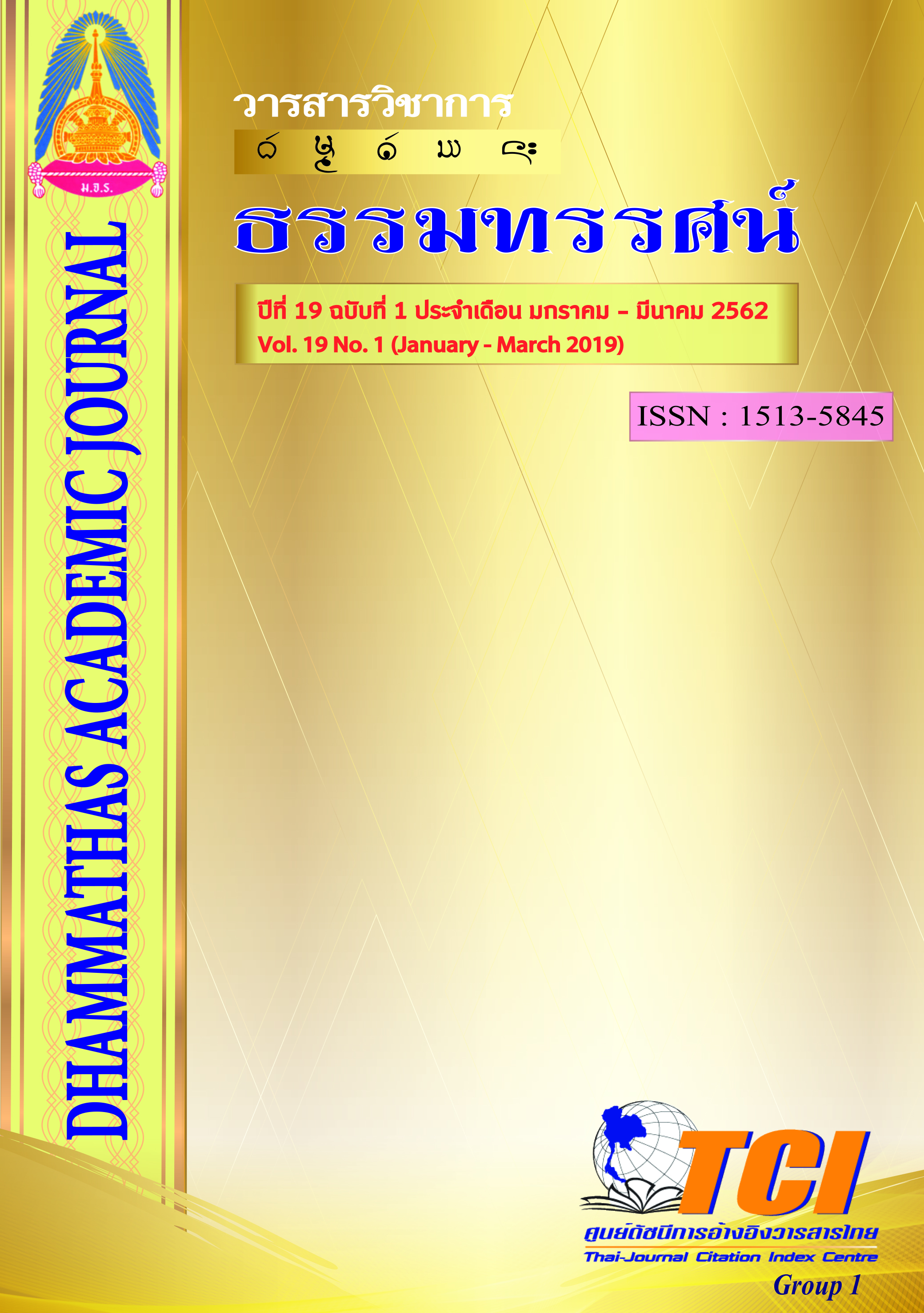The Buddhist Arts in Lanchang: Concept, Development and Art Cultural Values
Main Article Content
Abstract
This research aims: 1) to study the concept and development of Lanchang This research aims: 1) to study the concept and development of Lanchang Buddhist art, 2) to study the value and meaning of Buddhist philosophy of Lanchang Buddhist art. This is documentary research with collecting data from primary and secondary sources and making the descriptive analysis.
The research result was:
1. The concept and development of Lanchang Buddhist art was influenced from the art and cultural concept of Lanna, Khmer, Dvaravati and Mahayana Buddhism and mixed with the local beliefs in order to develop Buddhist art for Lanchang identity own self. For instant, the Buddha image was first found in Vientiane: Buddha was covered by spiral shaped curls of hair which cut by sword. The hair on the head is a small spiral curls, like snail-shells. The lips of mouth are thick and wide. The eyes are closed. The nose is big and equal-cut. For the Stupa which symbolized for Lanchang is bell-shaped and it is like a castle and similar to Khmer temple (Khom).
2. The value and meaning of Buddhist philosophy of the Lanchang Buddhist art showed that it consisted of artistic value which is the creation of symbolized art of Langchang. The cultural value is the value of observing from culture and custom of sprinkling water onto a Buddha image, culture and custom of Stupa worship and so on. The metal value is dependence and join-mind of Lanchang people. For the meaning of Buddhist philosophy from Buddha statue was 1) the uppermost bump of head represents sharp and deep wisdom of Buddha, 2) the small spiral curls, like snail-shells represents enlightenment as Buddhist saint (Arahant) with cutting the defilement, 3)the perfect face represents the person who release from defilement and has no anxiety, 4) the closed and loweredeyes refer to the person who has stillness, quietness, peace without any worries, 5) the smiling mouth represents the person who is enlightened one and awaked one. On the hand the meaning of Stupa: 1) the Stupa base refers to the planet of existence. If two bases, they refer to the earth and heaven, if three bases, they refers to three existences: sensuous planes, form planes and formless planes. 2) the four-sided Stupa doors refers the four-faced Brahman or the Four Sublime States: loving- kindness (metta), compassion (karuna), sympathetic Joy (mudita) and equanimity (upekkha), 3) the four-sided-terraces of Upper Half of the Stupa represents to Four Noble Truths and eight sided stupa represents to the Noble Eight Fold Path, 4) the throne of Stupa refers to Dhamma, 5) the segment refers to Dharmic principle, if three segments, they refer to three characteristics: impermanence (anicca), suffering (dukkha), and non-self (anattā), if four segments, they refer to the Four Noble Truth, if eight segments, they refer to the Noble Eight Fold Path and 6) the top of Stupa refers to Nibbāna or Vimutti (liberation).

